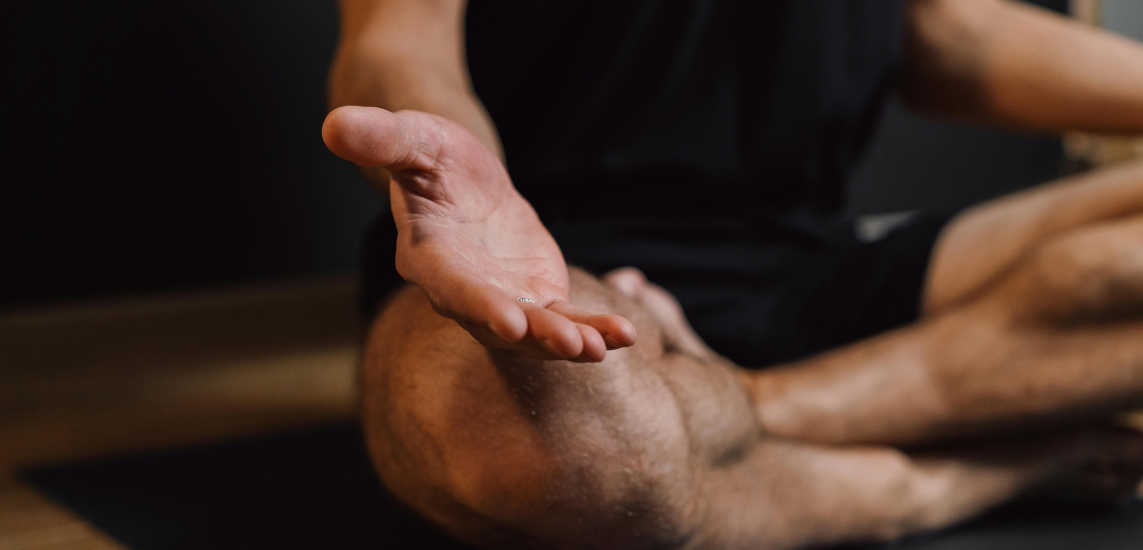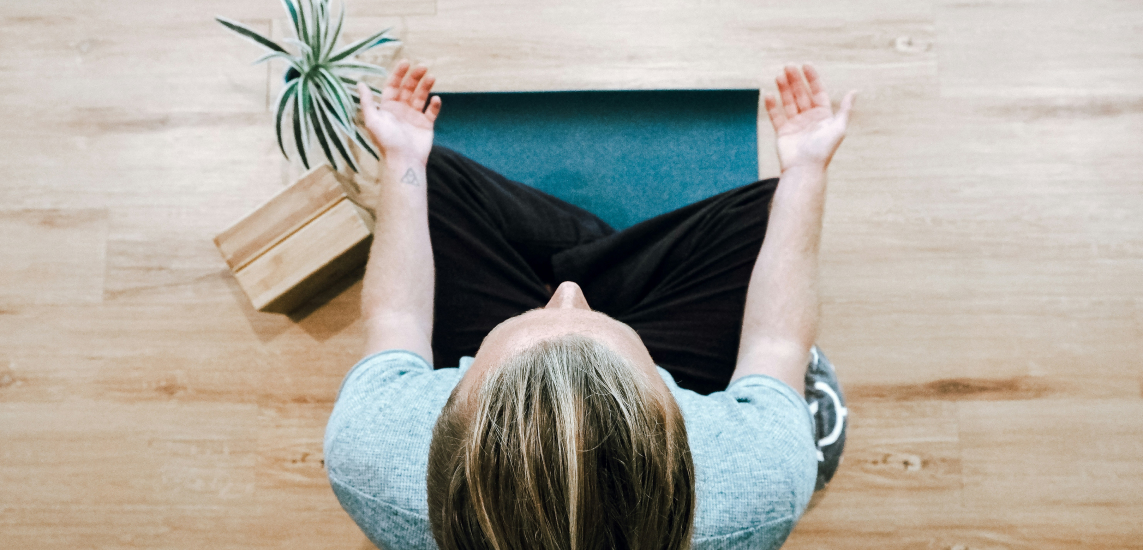Our body’s primary relaxation mechanism, a physiological process called the relaxation response, is a natural method of engaging the parasympathetic nervous system to reverse the effects of stress. The body can start it subconsciously when we feel safe and secure; even better, we can learn to engage it actively to help us regulate in times of stress, resulting in a healthier, happier body and mind.
Dr. Herbert Benson — who coined the term in the 1970s — describes the relaxation response as
“A physical state of deep rest that changes the physical and emotional responses to stress and is opposite of the fight-or-flight response.”
Triggering the relaxation response is a simple process. There are numerous benefits to working with our body’s relaxant and simple practices to bring it into everyday life.
Why Does The Relaxation Response Matter For Our Health?
Before we dive into practices to engage the relaxation response, it helps to understand how the relaxation response works to regulate physiology and reduce the effects of chronic stress.
In simple terms, the relaxation response is the exact opposite of what happens when our body gets into fight-or-flight mode as a result of perceived danger.
Being in fight-or-flight mode means that hormones like cortisol and adrenaline are flowing through at a rapid rate, blood flow increases to extremities, increased heart rate, slowed digestion, and the accompanying emotions of fear, anxiety, or anger.
Fight-or-flight has a clear biological benefit. It helps us escape danger like a predator or a near accident, and it gives us a “gut feeling” when something’s not right in our environment.
On the other hand, scientists have shown that chronic stress and being too busy hold negative consequences for human health. Among them are symptoms like fatigue, sleep problems, chest pain headaches, gastrointestinal issues, emotional difficulties like anxiety and depression, and an increased risk of disease.
Benefits Of The Relaxation Response
The immediate benefit of an induced relaxation response is that it brings our physiology down to a level that reduces our risk of feeling these symptoms. Hormone levels, blood pressure, and heart rate all decrease, and digestive functioning returns to normal. Our mind slows down and our feelings settle. We feel balanced.
According to an article published by Uniformed Services University, the relaxation response changes our body at the molecular level, too:
[The relaxation response] can affect which of your genes are activated… It can help turn ON certain genes that allow your body to use energy more efficiently – reducing cellular aging. The relaxation response can also turn OFF other genes that lead to inflammation and stress.
Moving the body into a relaxed state helps us calm down in stressful situations and contributes to long-term health.
How To Trigger The Relaxation Response
You have the power to instantly create a state of calmness — mentally and physically — when feeling stressed and overwhelmed. This ability is essential for dealing with daily stressors and combating the effects constant stress can have on our minds and bodies.
There are numerous mind-body techniques you can use to help the body engage the relaxation response and recover from stress and overwhelm. With regular practice, you’ll have a peaceful well of calm to dip into when the need arises.
Focus On Your Breath
The first technique is simply to focus on the breath. You can do this sitting or standing. Close your eyes and notice where the sensation of breathing happens in the body: your belly, your chest, or your back.
Feel yourself breathe for a few moments. Notice the quality of the breath without trying to change it. Is it fast? Ragged? Smooth? Soft? If it is difficult to keep your attention on your breath, try counting the breaths to get started. Count 1 to 10 then restart.
This technique is available to everyone regardless of the level of experience. It can become a gateway to meditation when practiced regularly.
Controlled Breathing Techniques
Once you feel familiar with watching your breath, a next-level way to enter the relaxation response is with accessible controlled breathing techniques. We will discuss two that you can learn at home.
The first technique is box breathing. It’s often used by first-responders, soldiers, and police to balance their nervous system in times of stress.
Box breathing has three steps:
- Close your eyes. Breathe in through the nose for a count of four.
- Gently hold the breath in. Count to four.
- Exhale for four.
Practice box breathing with the help of these guided meditations:
- Box Breathing For a Quick Reset Lynn Fraser Stillpoint 3:22
- 5 Minutes Of Box Breathing To Clear Your Mind Taylor Somerville 5:26
- Box Breath Rachel Fearnley 5:34
Over time, you’ll find yourself able to increase the breath counts to accommodate a longer breath pattern.
The second controlled breathing technique is called anulom vilom pranayam, or alternate nostril breathing. It is an ancient yogic breathing technique that starts the relaxation response by engaging the parasympathetic nervous system.
Performing anulom vilom is similar to box breathing with the added element of switching nostrils. Switching the nostrils provides a point of focus to calm the mind.
- Sit in a comfortable seated position and close your eyes. Fold the middle three fingers of your right hand so that only the thumb and pinky are pointed outwards.
- Place the thumb of your right hand on your right nostril. Inhale through the left nostril for a count of four. Hold the breath for four.
- Release the right nostril and cover the left with the pinky. Inhale through the right nostril for a count of four. Hold for four.
- Close the right nostril, open the left, and exhale.
- Repeat, alternating open and closed nostrils.
Alternate nostril breathing can not just trigger our relaxation response, it also sets clear foundations for a more resilient and energetic day. Practice with these guided breathing meditations:
- Breath-Based Practice: Alternate Nostril Breathing Pam Muir 14:30
- Alternate Nostril Breathing Meditation Rebecca Ryan 3:46
- Breathe For A Healthy Night Sleep Ed Harrold 6:52
Discover our large free collection of breathing meditation practices that help to anchor yourself in the present and achieve a calm state of mind.
Body Scan Meditations
Body scan meditations blend focus with progressive targeted relaxation of the parts of the body. You’ll find yourself feeling deeply relaxed after this type of meditation. It is an excellent preparation for sleep.
The body scan meditations that I find most relaxing start by lying down on the bed, a yoga mat or a blanket spread out on the floor. Begin by closing the eyes and focusing the attention on the breath.
Then, bring your attention to either the feet or the head. Consciously relax that area. Move the attention to the area next to it (ankles or forehead). Relax that area.
Move the attention throughout the body until you are fully relaxed with the help of these popular body scan practices:
- Body Scan Elisha Goldstein 30:00
- Body Scan Meditation Kate James 15:21
- The Body Scan Penny McGahey 30:04
- Body Scan For Kids Mark Bertin MD 11:39
Repetitive Phrases, Prayer Or Mantra
Many religious and spiritual traditions use this technique as a method to focus the mind and bring a sense of peace. It can be particularly meaningful to choose a mantra or prayer if you have a personal attachment to a tradition.
To perform this technique, ground the body in a comfortable seated or standing position, eyes open or closed. Silently repeat the chosen phrase to yourself while bringing the entire attention to the feeling that the phrase creates in your body. Does it make you feel calm? Joyful? Sleepy?
Bringing focus within the mind can help to trigger the relaxation response.
Discover our free collection of mantra meditation practices to achieve stillness.
Yoga Nidra
Yoga nidra meditation is a guided meditation performed lying down.
This meditation is an excellent tool to relax the body and mind by engaging its natural relaxation response.
Yoga nidra involves a combination of the above techniques – often breathing and body scan – plus soothing guided imagery. Scientists in the Indian Journal of Traditional Knowledge found it also to be a powerful method to reduce anxiety in both men and women.
Experience the relaxing effects of yoga nidra with these beautiful guided practices:
- Yoga Nidra: Freedom Nature Jennifer Piercy 30:14
- Yoga Nidra For Relaxation The StillPoint 24:22
- Yoga Nidra To Reconnect & Expand Perspective Jana Roemer 49:10
Practice Healthy Boundaries With Stressful Situations
The last technique seems the most obvious but can be the most difficult: remove yourself from situations that cause you stress. You may need to set better boundaries with difficult family members or coworkers or limit your screen time to certain hours during the day.
Read more: Some stressors at your workplace might be structural and behavioral. Discover effective practices to de-stress at work and become more calm, focused and happy.
Using any or all of these methods will help you reduce the fight-or-flight response by engaging the body’s natural relaxation response. You’ll be healthier, happier, and more grounded as a result.
Read more: Regularly practicing meditation is an effective way of strengthening our ability to trigger the relaxation response. Explore when is the best time to meditate for you to feel more spacious and free.




-1.jpg)


